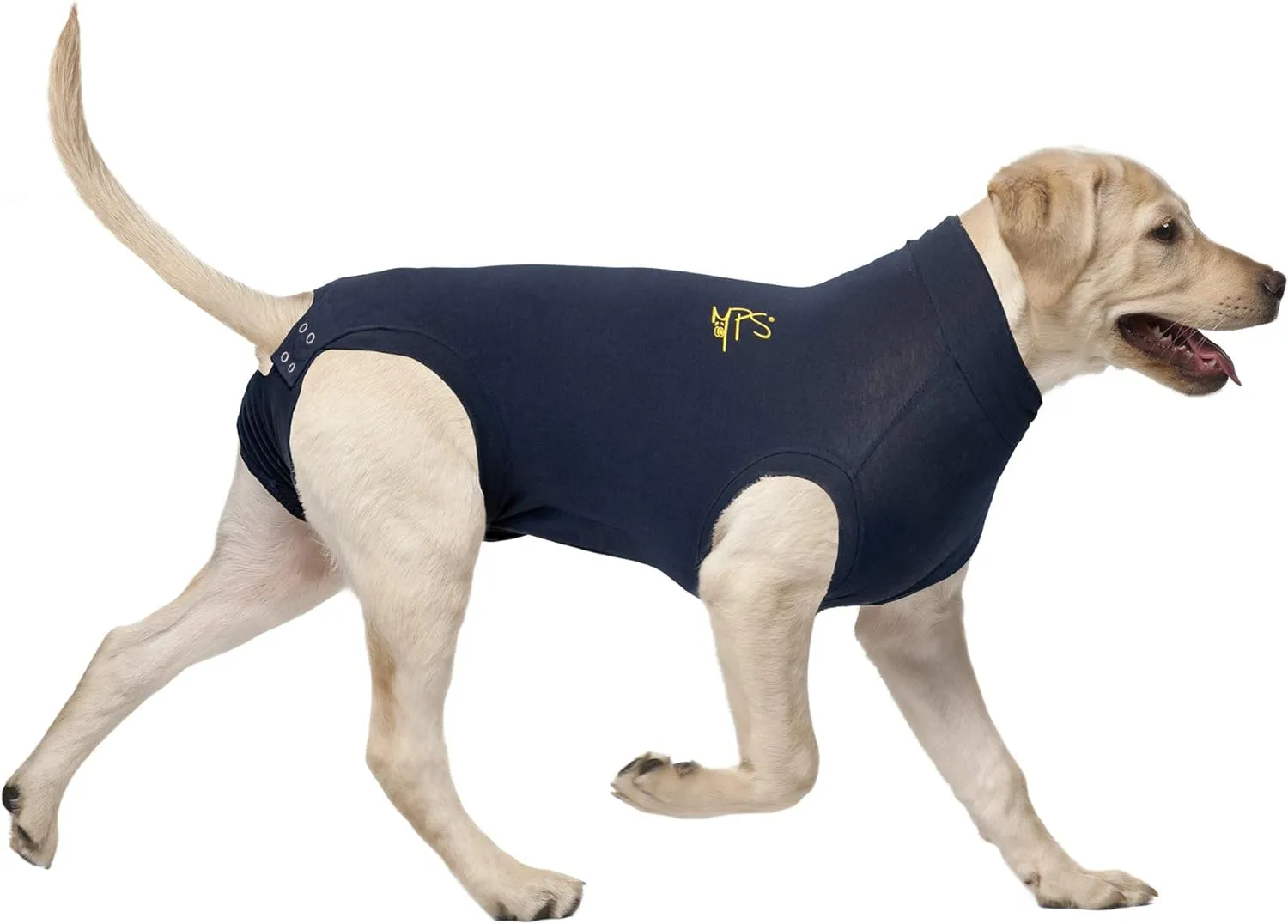If you wish to have your dog sterilised, it can be done with us using both the traditional method and through laparoscopic surgery. The notion that laparoscopic surgery is painless is a myth. Both methods have their advantages and disadvantages.
Traditional sterilisation involves making a small incision in the midline of the abdominal wall in the connective tissue that connects the two halves of the abdomen. This means no incision is made in a muscle, which would be considerably more painful. The incision typically ranges from 3 to 6 cm. The ovaries are brought outside the abdominal cavity, the blood vessels are ligated, and then the ovaries are removed before closing the abdomen in 3 layers with sutures. The sutures are placed under the skin and dissolve on their own. In laparoscopic sterilisation, we work with three small incisions of approximately 1 cm in the abdominal wall. The abdomen is inflated with CO2 for better visibility, and the blood vessels of the ovaries are sealed within the abdominal cavity using a heat source, after which the ovaries themselves are removed through the incision holes. The incisions are then closed with sutures. In both methods multimodal pain relief is used to ensure your dog feels no pain during the operation.
Traditional Method
Advantages
- Cost-effective as it requires less equipment and fewer staff
- Shorter anesthesia time with experienced surgeons, reducing anesthesia risks
- No need for CO2 in the abdomen, reducing respiratory difficulties and hence anesthesia risks
- If the uterus is abnormal, it can be removed through extension of the same incision (particularly important in older dogs)
Disadvantages
- Stretching of the ligaments of the ovaries, leading to more pain during and after the procedure, particularly in large dogs and dogs with deep chests, sometimes requiring deeper anesthesia.
- Slightly larger incision
Laparoscopic spay
Advantages
- Less painful and requires less anesthesia, particularly in large dogs and dogs with deep chests
- Three small incisions heal slightly better than one large incision
Disadvantages
- More expensive as it requires more equipment and staff
- Inflation of the abdomen with CO2 can cause irritation and pressure on the diaphragm, making breathing difficult
- More challenging in smaller dogs due to limited abdominal space
- The removal of the uterus cannot be done with this method (less suitable for older females)

